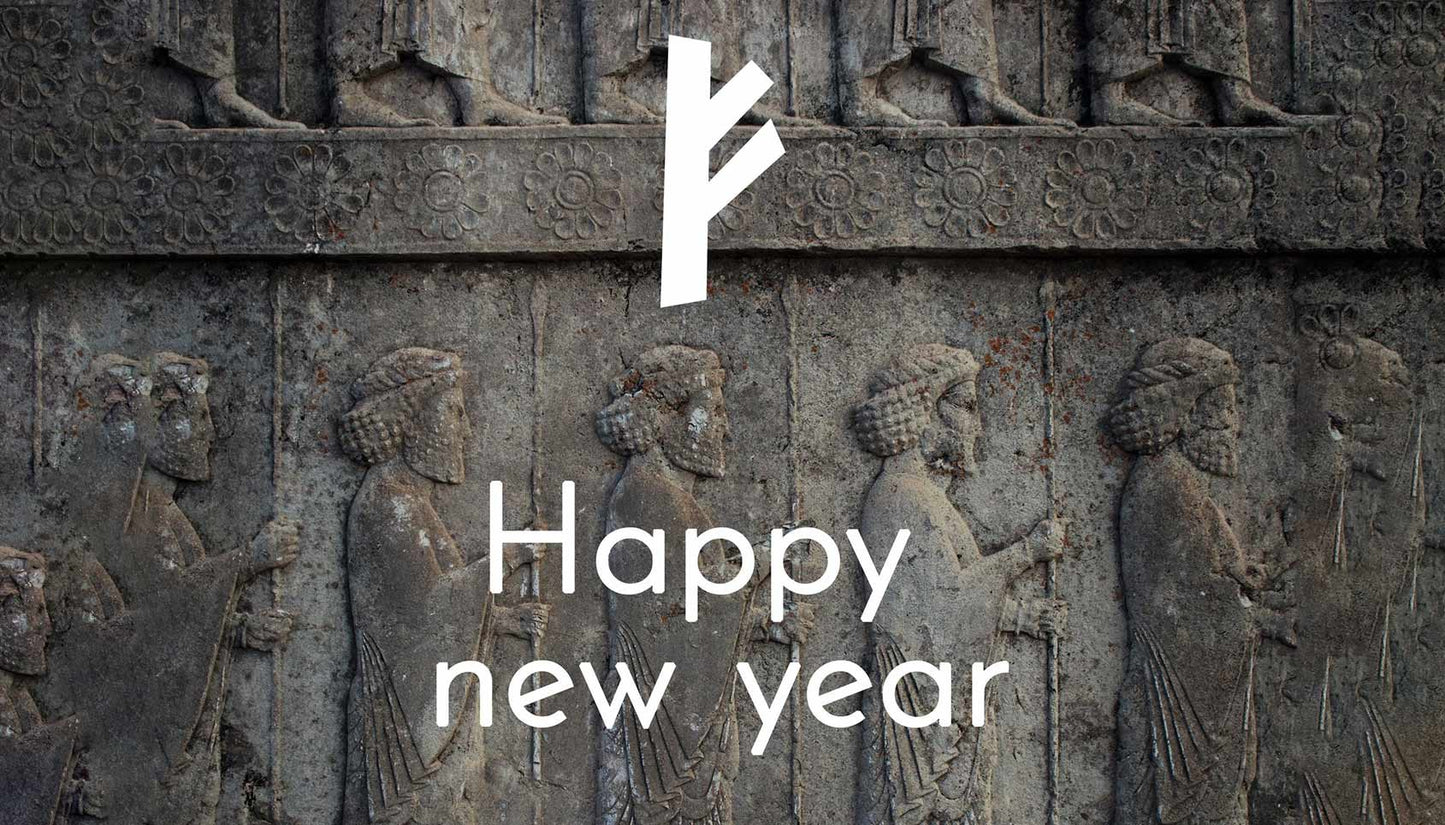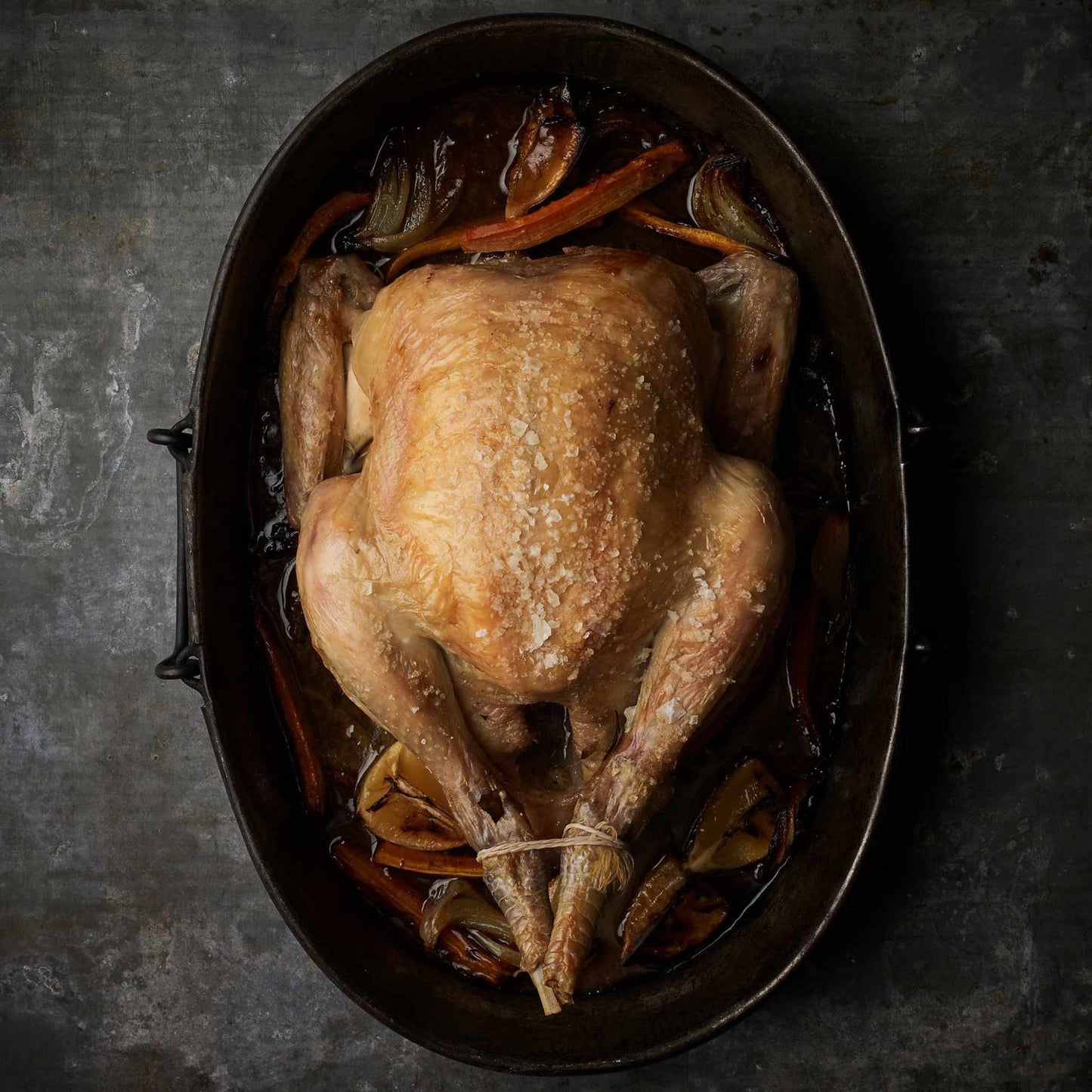We source our chicken from one farm in Leicestershire. The farm is Pasture for Life certified and rears truly free range, outdoor birds.

No, we haven't lost it, we're acknowledging that different cultures and historically our ancestors consider the start of the year to be now, today, Wednesday 20th March, this year more specifically this evening at 21:24 (9:24 pm)
Nowruz
To many in the UK the word Nowruz might not mean much but to anyone from Iran, Albania, Afghanistan, Azerbaijan, Kyrgyzstan, Uzbekistan, Turkmenistan, Kazakhstan, Tajikistan or Iraq it means New Year!
Using the ancient Iranian solar calendar the year starts with the March equinox or vernal equinox when the sun crosses above the equator and the Northern hemisphere moves into Spring with the Southern hemisphere moving into Autumn. This date is significant as it is when the hours of daylight are almost equal across all latitudes on earth. At this moment, Earth's axis is tilted neither away from nor towards the Sun, but is rather perpendicular to the Sun's rays.
Whilst we use a Gregorian calendar that marks the start of the year on January 1st and the reason for this dates back to the Roman king Numa Pompilius (c. 715 - 673 BC)
Numa revised the Roman republican calendar so that January replaced March as the first month as January was named after Janus, the god of new beginnings and March celebrated Mars the god of war.
Some sources claim that Numa also invented the month of January however it is thought that January 1st didn't become the start of the year until 153 BCE.
It later became clear that the Julian calendar required additional changes due to a miscalculation concerning leap years. The cumulative effect of this error over the course of several centuries caused various events to take place in the wrong season.
It also created problems when determining the date of Easter. Thus, Pope Gregory XIII introduced a revised calendar in 1582. In addition to solving the issue with leap years, the Gregorian calendar restored January 1 as the start of the New Year. While Italy, France, and Spain were among the countries that immediately accepted the new calendar, Protestant and Orthodox nations were slow to adopt it.
Great Britain and its American colonies did not begin following the Gregorian calendar until 1752. Before then they celebrated New Year’s Day on March 25.
However, the Iranian solar calendar remains the most accurate solar calendar we use today as it uses astronomical calculation for determining the vernal equinox and has no intrinsic error.
The first six months (Farvardin–Shahrivar) have 31 days, the next five (Mehr–Bahman) have 30 days, and the last month (Esfand) has 29 days in common years or 30 days in leap years.
Nowruz traditions.
Many of the traditions that the 300 million people who recognise Nowruz follow come from the ancient persian religion of Zoroastrianism.

Image above is the Faravahar which is often used to represent Zoroastrianism and serves as a Zoroastrian depiction of the fravashi, or personal spirit.
Zoroastrianism is a pre-Islamic religion that dates back to at least the 6th century BC and is based on the teachings of an Iranian prophet called Zoroaster. The religion is has a dualistic cosmology of good and evil in a framework that is monotheistic with the deity being the benevolent Ahura Mazda the literal meaning of which is Lord of Wisdom.
In Zoroastrianism, fire and water are considered symbols of purity and these symbols play a part in traditions still seen Nowruz traditions today.
How is Nowruz celebrated today?
Although traditions vary across the central Asian countries that recognise this start of the year a common theme of fire is seen across many of them. In Iran especially there remains a strong tradition of jumping over a bonfire, this symbolises cleansing and the power of fire to renew.

Preparations for Nowruz celebrations in Iran begin weeks before the start of spring, including house-cleaning (khaneh takani). Families also grow sabzeh (wheat, barley, mung bean or lentils) in a dish.
When the greens sprout after a couple of weeks, the dish is placed on the Haft-seen table, which is the focus of Nowruz observance. It is joined by six other symbolic items which start with the Persian letter "seen" or S. That makes seven, a sacred number in Zoroastrianism. They include:
seeb (apples) - symbol of health and beauty
senjed (dried oleaster berries) - wisdom and rebirth
samanu (wheat pudding) - strength/justice
somaq (sumac) – patience
serkeh (vinegar) - age/patience
seer (garlic) - cleansing of body and environment
The Haft-seen spread also includes other items such as a mirror, symbolising reflection; coloured eggs, for fertility; and goldfish in a bowl, which represent life.
There is usually also a book by the Persian poet Hafez (1315-1390), or the Quran. They reflect Nowruz’s power to blend its ancient roots with more recent religious and cultural traditions.
How other cultures celebrate the Spring Equinox
This turn in the seasons has been celebrated by cultures throughout history who held festivals for their gods and goddesses at this time of year. Aphrodite from Cyprus, Hathor from Egypt and Ostara of Scandinavia.
Closer to home it is The Celts who continued the tradition with festivities at this time of year.
Today, Pagans continue to celebrate the coming of Spring. They attribute the changes that are going on in the world to an increase in the powers of their God and Goddess (the personifications of the great force that is at work in the world). At the time of Spring Equinox the God and the Goddess are often portrayed as The Green Man and Mother Earth.
The Green Man and Mother Earth
The Green Man is said to be born of Mother Earth in the depths of winter and to live through the rest of the year until he dies at Samhain.
To celebrate Spring Equinox some Pagans carry out particular rituals. For instance a woman and a man are chosen to act out the roles of Spring God and Goddess, playing out courtship and symbolically planting seeds. Egg races, egg hunts, egg eating and egg painting are also traditional activities at this time of year.
It's a time for rebirth, growth and fertility so this evening at 21:24 perhaps meditate, with a loved one, on the turning point and wonder what the new year can bring and if you can build a bonfire, jump over it! (safely!)



